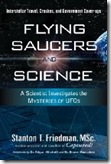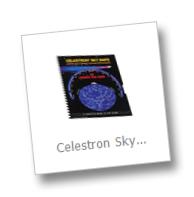 Flying Saucers and Science: A Scientist Investigates the Mysteries of UFOs: Interstellar Travel, Crashes, and Government Cover-Ups
Flying Saucers and Science: A Scientist Investigates the Mysteries of UFOs: Interstellar Travel, Crashes, and Government Cover-Ups
By Stanton T. Friedman
Flying Saucers and Science is a comprehensive look at the scientific data on the flying saucer phenomenon. Nuclear physicist and lecturer Stanton T. Friedman has distilled more than 40 years of research on UFOs, and shares his work on a wide variety of classified advanced nuclear and space systems. He answers a number of physics questions in layman's terms, and establishes that travel to nearby stars is within reach without violating the laws of physics.
Photographs of little known, far-out advanced propulsion systems, on some of which he worked, are included. Friedman also presents data demonstrating the ability to withstand high accelerations with some surprising results. He clearly shows that government policy on this subject has been to provide false, misleading claims and disinformation, and establishes that the subject truly represents a Cosmic Watergate.
Flying Saucers and Science presents intriguing data from a number of large-scale scientific UFO studies that almost no one, especially the noisy negativists, has discussed in detail. It deals with a host of "why" questions such, as reasons for the cover-up, reasons for aliens to come to Earth, and reasons for not landing on the White House lawn. Friedman unveils the SETI program, and details the antipathy of science-fiction writers to UFOs and other mysteries of the saucer conundrum. False notions about those who believe in the reality of alien visitors and the adequacy of coverage by the journalistic and scientific communities are reviewed.
In this book you'll discover:
* What type of energy and technologies could provide travel
* between the stars.
* The most likely locations in the universe where aliens come from.
* Why the aliens are here.
* Who believes in the flying saucer phenomenon.
* The government's motives to cover-up.
Readers of Flying Saucers and Science will never feel the same about UFOs again.
A Good Overview
This book assumes the reader is already quite knowledgeable about Roswell/MJ-12 etc. It refers broadly to primary source material such as "project blue book special report #14" that purportedly describes many documented "physical trace" UFO sightings but does not provide specific examples therefrom, which would have been helpful.
Deliciously enjoyed was Friedman's ruthless lampooning of the over-hyped "Cult of SETI" and his analysis of why major news outlets, such as the Washington Post, are content not to treat the UFO topic seriously.
Crop circles and animal mutilation cases are specifically excluded from coverage in this book. While not for the novice, Flying Saucers and Science is a stimulating and informative read. The bibliography is a bit terse, however.
Stanton Friedman does it again
Stanton Friedman does it again. From an in-depth look at how the world's governments and military can keep secrets from themselves and the rest of the world to the multitude of factual evidence supporting UFO sightings, landings and abductions; his latest book does not disappoint. Anyone who is famliar with him or his work should know that he has worked as a nuclear physicist for years, many of which were for classified government and private projects.
In his latest book, he presents some of the most compelling evidence for the "Cosmic Watergate" surrounding UFOs, extraterrestrial life and their cover-up, which has been in effect for at least 60 years. From examining exotic propulstion systems, including nuclear fission and fusion powered rockets, to the reasons why such disclosure of ET life is the most important topic for us as a species, this book is simply a must read.
Very engaging!
I have read other books and articles by Stan and they're all very enlightening. Although some of the concepts in this book are geared more towards the real science behind how the UFOs might operate, etc... Stan does a good job keeping the layman engaged throughout.
I have exchanged e-mails with Stan on several occassions and he's always consistent in his answers and very well informed.
To me, Stan is the ultimate authority in Ufology.
Buy this book!










